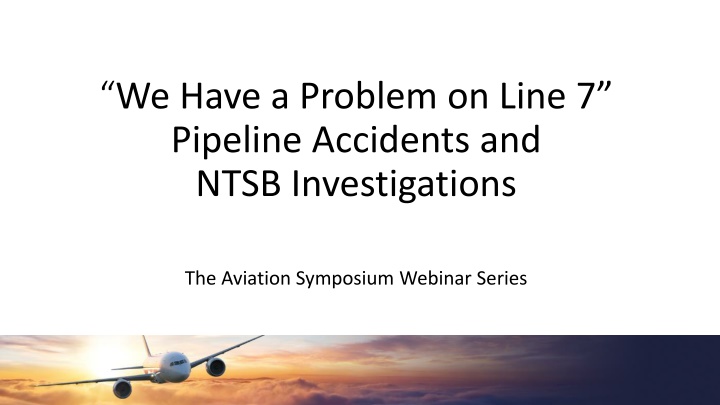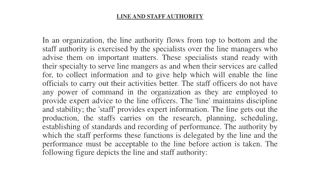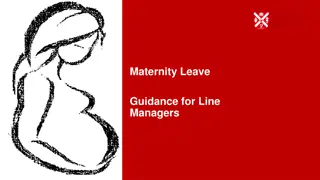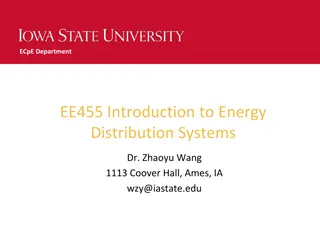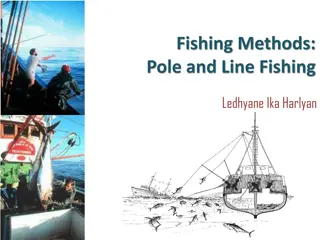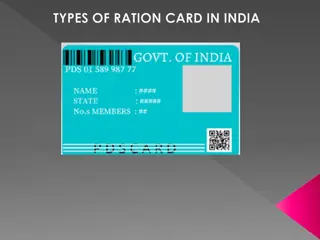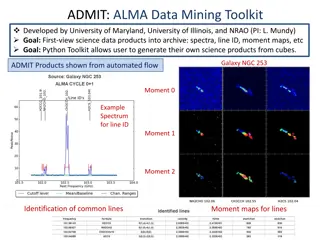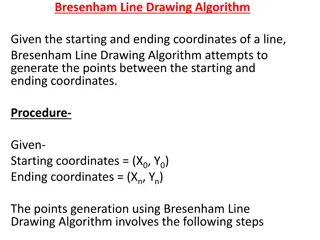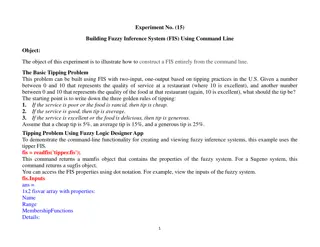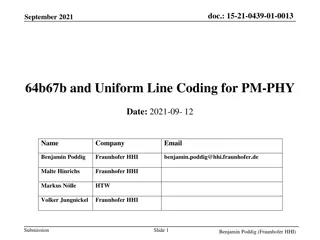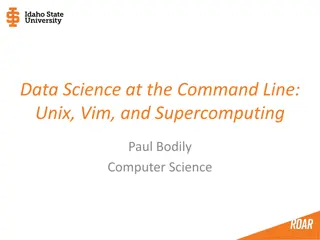“We Have a Problem on Line 7”
This content provides a comprehensive overview of NTSB investigations, focusing on pipeline accidents. It delves into the structure, functions, decision-making process, on-scene procedures, areas of focus, impacts, and priorities of the NTSB. The role of NTSB in ensuring safety and investigating catastrophic incidents involving various modes of transportation is highlighted.
Download Presentation

Please find below an Image/Link to download the presentation.
The content on the website is provided AS IS for your information and personal use only. It may not be sold, licensed, or shared on other websites without obtaining consent from the author.If you encounter any issues during the download, it is possible that the publisher has removed the file from their server.
You are allowed to download the files provided on this website for personal or commercial use, subject to the condition that they are used lawfully. All files are the property of their respective owners.
The content on the website is provided AS IS for your information and personal use only. It may not be sold, licensed, or shared on other websites without obtaining consent from the author.
E N D
Presentation Transcript
We Have a Problem on Line 7 Pipeline Accidents and NTSB Investigations The Aviation Symposium Webinar Series J u n e 1 3 , 2 0 1 8 W W W . L E C L A I R R Y A N . C O M
Presenters David Tochen Morgan Campbell 2
National Transportation Safety Board Independent Safety Board Act - 49 USC 1101-- 1155 49 CFR 831.2: NTSB is required to investigate accidents involving aviation, highways, railroads, pipelines, hazardous materials, and other accidents that are catastrophic, involve recurring issues, or otherwise fulfill NTSB s safety mandate. 3
NTSB Structure Board Members Modal Offices Victims/Family Assistance 4
NTSB Functions Findings of Fact Probable Cause Recommendations Assist Victims and Families Conduct Safety Studies Advocacy Most Wanted List 5
NTSB Launch Decision Notification and Preliminary Information Chairman, Board Member On-Call, Director of Pipeline Office and staff, and other NTSB Executives decide launch/no-launch NTSB Chairman calls company CEO (varies by Chairman) 6
On Scene Board Member on scene Investigator-in-Charge Staff 7
NTSB Areas of Focus Speed and efficacy of Emergency Response Damage caused Integrity Management Aging infrastructure 8
Impact of NTSB Investigation Divert company resources Strains workforce Media coverage/brand impact Creates a record 9
Prioritize Protect People Protect Property/Environment Protect Evidence Notify and Investigate 10
Follow the Plan Initiate Emergency Plan Track Progress Use contact list for both company employees and outsiders such as PHMSA, NTSB, your state regulator, outside counsel, insurers, etc. 11
Notify Corporate Security Corporate security personnel should be advised of the accident. Secure accident site, company HQ, and any other sites of media interest (such as nearby compressor stations). It is not unusual for the press to seek access to corporate offices and key personnel immediately after an accident. 12
Make Required Notifications Notify National Response Center at the earliest practicable moment following discovery (See 49 CFR 191.5) Include name of operator and person making report, emergency contact numbers, location/time of incident, and number of fatalities and personal injuries. 13
Meet Reporting Requirements File Report with PHMSA By 30 Days After Incident if death, hospitalization, $50,000 in property damage, unintentional gas loss of 3 million cubic feet or more, emergency shutdown of an LNG facility, or is otherwise significant in the judgment of the operator. Do not speculate on cause. Do not speculate on spill volumes. 14
Avoid the Fine For failure to comply with the reporting requirements, a maximum civil penalty of $200,000 per violation can be levied (each day violation continues is a separate violation), not to exceed a total of $2,000,000 for a related series of violations. 15
Stay on Track NTSB PHMSA / State Regulator EPA Media Local government/politicians Customers/public 16
Notify Outside Counsel Outside counsel should be notified and advised to stand by as legal questions arise and employee interviews are requested. All persons interviewed by the NTSB are entitled to counsel. (See 49 CFR 831.7.) Given criminal/civil consequence, do not allow any employee to be interviewed without preparation and representation. 17
Test for Drugs Drug tests must be accomplished as soon as possible, but no later than 32 hours after the accident. (See 49 CFR 199.105) Drug tests must be accomplished on each covered employee whose performance either contributed to the accident or cannot be completely discounted as a contributing factor to the accident. (See 49 CFR 199.105) 18
Test for Alcohol ASAP. If not done within 2 hours, the reasons must be documented. If not done within 8 hours, attempts at testing must cease. (See 49 CFR 199.225) A covered employee must submit to a post-accident alcohol test required under 199.225(a), a reasonable suspicion test required under 199.225(b), or a follow-up alcohol test required under 199.225(d). 19
Prevent Post-Accident Drinking Each operator shall prohibit a covered employee with actual knowledge of an accident in which his/her performance of covered functions cannot be ruled out by the operator as contributing to the accident from using alcohol for 8 hours following the accident, unless a post-accident test takes place under 199.225(a). (49 CFR 199.221) 20
Remove from Duty No operator shall permit an employee who refuses to submit to such a test to perform or continue to perform covered functions. (See 49 CFR 199.223) Even employees who submit to testing should be briefly removed from duty to minimize potential liability. 21
Comply with Insurance Policy Notify your insurer of the leak, explosion or other mishap. Insurance policies typically require immediate notification in the event of an accident. 22
The Party System 49 CFR 831.11 NTSB conducts investigations under its party system Invites entities to become parties Leverages technical expertise Parties are limited to those persons, gov t agencies, companies and associations whose employees, functions, activities, or products were involved in the accident and who can provide suitable qualified technical personnel to actively assist in the field investigation. 23
On-scene 1 week Fact gathering and evidence collection Witness interviews IIC issues subpoenas and designates parties Organizational meeting Establish investigative groups (Ops/HP, Metallurgical, Emergency Response, Hazardous Materials, Control Room and SCADA, Integrity Management) 24
Role of NTSB Office of General Counsel in Support of Accident Investigations Assists with on-scene legal issues Explains NTSB party system and information sharing issues to party counsel Communicates with local prosecutors, state attorneys general, US Attorney Offices Signs subpoenas (several hundred issued per year) Advises on evidence and wreckage handling issues and family assistance issues 25
Select the Right People The pipeline operator should assign its very best people to the NTSB working groups. Many will be key witnesses in civil litigation and possibly criminal investigations. All must be capable of recognizing and intervening when the pipeline operator s interests are being compromised by actions taken, or neglected, by the NTSB or other parties. 26
Know Your Duties Personnel assigned to the investigation will be expected by the NTSB to participate for the entire investigation and generally may not be replaced by alternates or relieved of duty until the NTSB approves. The Party Coordinator will be the primary focal point for all contact with the NTSB on the accident investigation. 27
Know Your Duties (Contd) Personnel approved to participate in NTSB investigation must sign statement agreeing: Not to share info with co-workers, management or anyone outside the investigation Not to prejudice the investigation or violate NTSB policies or instructions Not to withhold pertinent information He/she does not occupy a legal position He/she does not represent claimants/insurers https://www.ntsb.gov/legal/Documents/NTSB_Investigation_Party_Form.pdf 28
Be Careful with NTSB Interviews No impromptu interviews No informal interviews Arrange through party coordinator Have counsel prepare witness Have counsel defend witness Prepare party coordinator and working group member for interview Do not speculate 29
Prepare for Document Requests Consult with IT department; consider outside vendor Check state laws and employment agreements re: employee electronic information/privacy Understand document retention policies and suspend automatic deletion of emails/documents pending counsel opinion documents are not potentially relevant Document hold notices Identify which persons need to be involved with obtaining documents Identify document privileges 30
Identify Key Documents Pipeline construction and installation Pipeline testing Pipeline inspection Pipeline protection Pipeline maintenance All other records relating to the accident or incident or that might potentially be relevant in any way. 31
Identify Key Documents (Contd) Seismic or soil studies in the area Pipeline maps, schematics, etc. Records of PHMSA audits Personnel records for anyone whose performance cannot be discounted as a factor Emails/texts Procedure Manual for Operations, Maintenance and Emergencies (49 CFR 195.402(a)) 32
Other Documents to Retain Integrity Management Plan Emergency Response Plan Risk Management Plan Freeze the version in place at time. Retain correct versions until investigation and litigation has ended. 33
Other Documents to Retain (Contd) Public awareness materials one-call notification system hazards associated with gas leaks indications a release has occurred steps to take in the event of a release procedures for reporting gas releases mailing lists 34
Failure to Preserve Failure to preserve key documents could be construed as conduct prejudicial to the investigation, which could lead to loss of party status, negative attention by media, and government scrutiny. See 49 CFR 831.11(a)(4). 35
Spoliation of Evidence Failure to preserve key documents also could be construed as spoliation of evidence, which can lead to: a) a court order that certain allegations of the adverse party be taken as true; b) imposition of monetary sanctions; c) an independent lawsuit seeking monetary damages. 36
Abide by NTSB Restrictions Abide by NTSB Restrictions Do not discuss cause of accident. Do not release information about the investigation that has not been released by NTSB. 37
Know What You Can Say Anything you could say pre-accident: Your safety record Basic company facts Pipe age, specifications, material, type of welds, type of coating, etc. Company policies and procedures Information that has already been publicly released by NTSB. Anything the NTSB lets you say. Ask them. 38
Preserve Pipeline Wreckage Evidence, including physical evidence at the site, must be preserved to cooperate with the NTSB s investigation and to avoid violating applicable spoliation laws. Pipeline sectioning, storage and transport must be coordinated with NTSB. 39
NTSB Document Requests Upon demand by NTSB, the pipeline operator must forthwith permit inspection, photographing, or copying of pertinent records. 49 CFR 831.9(a). The pipeline operator should always retain the original records. There is no requirement that original records be given to the NTSB. 40
Document Transmittal Log Create and maintain a document transmittal log that includes at a minimum: document title or description date of request who requested it date delivered person delivered to number of pages. 41
Mark Confidential Documents produced to NTSB should be stamped Trade Secret and/or Confidential Commercial Information to ensure that proprietary information is protected. The confidential designation can always be retracted at a later date. See 49 CFR 831.6(c). 42
Beware your John Hancock Under no circumstances should a company employee sign anything without approval of counsel. This is particularly important for personnel participating in the NTSB investigation. NTSB field notes that are incomplete, inaccurate and misleading are frequently signed by employees who feel pressured. 43
After On-Scene Work is Completed Additional Fact-Gathering Continues Modal Safety Office issues a public preliminary report within several weeks after the accident Modal Safety Office recommends to the Board whether or not an investigative hearing is needed to obtain additional facts Once fact-finding is completed, Modal Safety Office shares final drafts of Group Chairmen s factual reports with opportunity for parties to submit comments (Technical Review) 44
Review Draft Factual Reports Carefully review and comment on NTSB Draft Factual Reports Push back on erroneous information Push to remove any analysis from the factual report 45
Post Evidence Gathering Phase Analysis phase commences NTSB only; no participation by parties Analysis work typically includes work by the NTSB s Materials Lab Division Modal Safety Office prepares draft Board Accident Report for internal Directors Review prior to Board Member review 46
Post Evidence Gathering Phase Draft Report consists of factual information, analysis, findings, probable cause statement, and recommendations Approximately eight weeks prior to submission of draft report for Board Member review, Office of Rail, Pipeline, and Hazardous Materials Investigationsopens public docket 47
Prepare Party Submission Draft a party submission that includes: Summary of key facts Your analysis of the investigative record Proposed findings of fact Proposed probable cause Proposed recommendations 48
Pre-Board Meeting Phase Each Board Member may separately meet with staff to discuss the draft Board Accident Report. Also, Board Members submit written comments to staff Agency publishes Sunshine Act meeting notice in the Federal Register announcing time and date on Board Meeting to deliberate and vote on the draftBoard Accident Report. 49
Meet with NTSB Board Members Schedule meetings with each NTSB Board Member before the NTSB s Sunshine Meeting. Opportunity to raise key issues directly with NTSB Board Members. Modal Safety Office staff, Board Member assistants, and General Counsel staff will likely attend these meetings. 50
